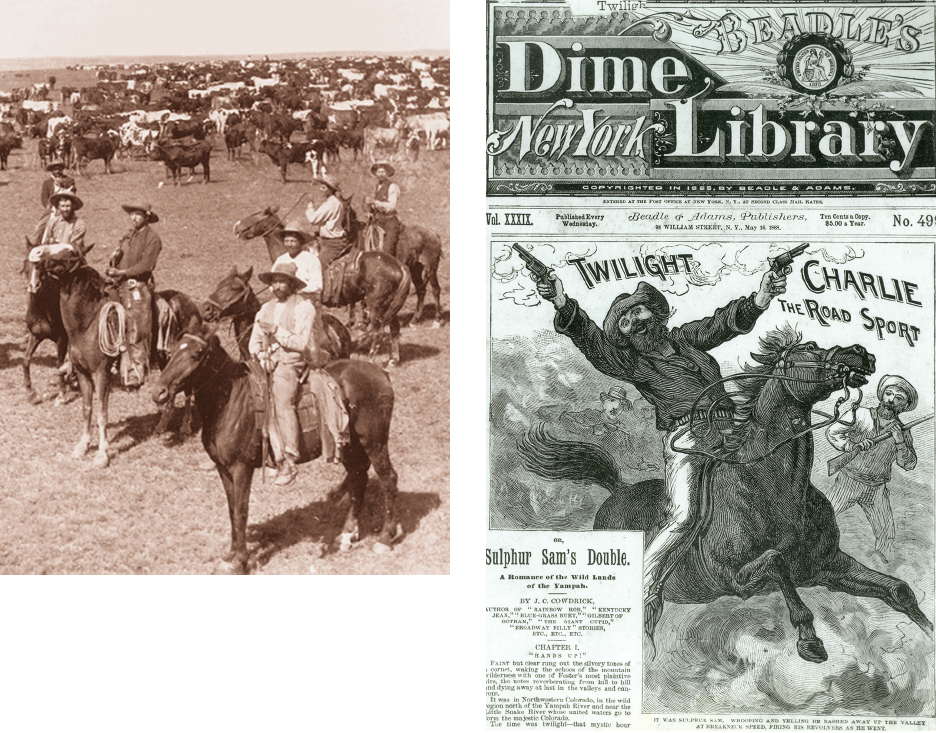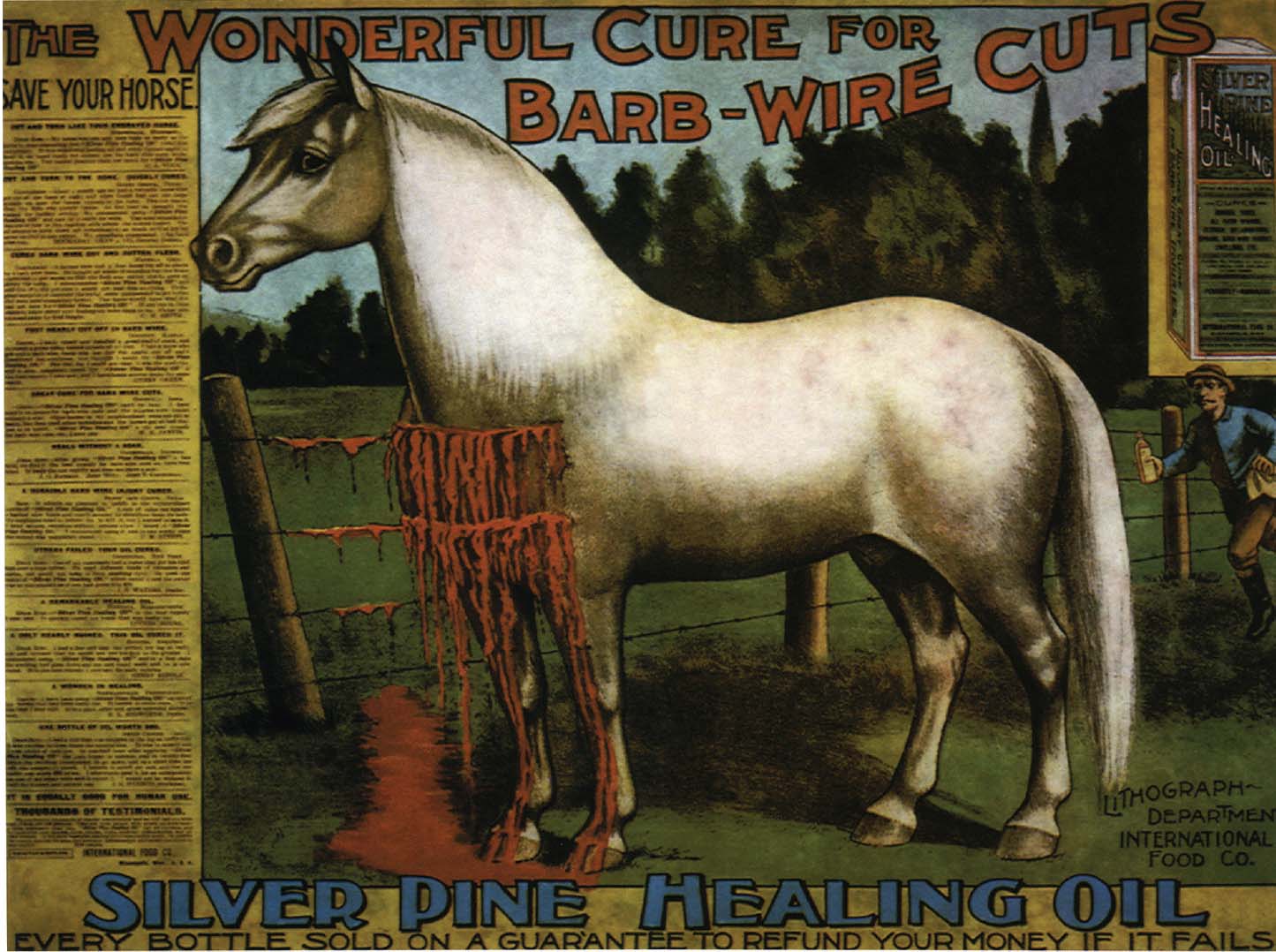Cattlemen on the Plains

While boomtowns arose across the West, hunters began transforming the plains. As late as the Civil War years, great herds of bison still roamed this region. But overhunting and the introduction of European animal afflictions, like the bacterial disease brucellosis, were already decimating the herds. In the 1870s, hide hunters finished them off so thoroughly that at one point fewer than two hundred bison remained in U.S. territory. Hunters hidden downwind, under the right conditions, could kill four dozen at a time without moving from the spot. They took hides but left the meat to rot, an act of vast wastefulness that shocked native peoples.
Removal of the bison opened opportunities for cattle ranchers. South Texas provided an early model for their ambitious plans. By the end of the Civil War, about five million head of longhorn cattle grazed on Anglo ranches there. In 1865, the Missouri Pacific Railroad reached Sedalia, Missouri, far enough west to be accessible as Texas reentered the Union. A longhorn worth $3 in Texas might command $40 at Sedalia. With this incentive, ranchers inaugurated the Long Drive, hiring cowboys to herd cattle hundreds of miles north to the new rail lines, which soon extended into Kansas. At Abilene and Dodge City, Kansas, ranchers sold their longhorns and trail-weary cowboys crowded into saloons. These cow towns captured the nation’s imagination as symbols of the Wild West, but the reality was much less exciting. Cowboys, many of them African Americans and Latinos, were really farmhands on horseback who worked long, harsh hours for low pay.
North of Texas, public grazing lands drew investors and adventurers eager for a taste of the West. By the early 1880s, as many as 7.5 million cattle were overgrazing the plains’ native grasses. A cycle of good weather postponed disaster, which arrived in 1886: record blizzards and bitter cold. An awful scene of rotting carcasses greeted cowboys as they rode onto the range that spring. Further hit by a severe drought the following summer, the cattle boom collapsed.
Thanks to new strategies, however, cattle ranching survived and became part of the integrated national economy. As railroads reached Texas and ranchers there abandoned the Long Drive, the invention of barbed wire — which enabled ranchers and farmers to fence large areas cheaply and easily on the plains, where wood was scarce and expensive — made it easier for northern cattlemen to fence small areas and feed animals on hay. Stockyards appeared beside the rapidly extending railroad tracks, and trains took these gathered cattle to giant slaughterhouses in cities like Chicago, which turned them into cheap beef for customers back east.
